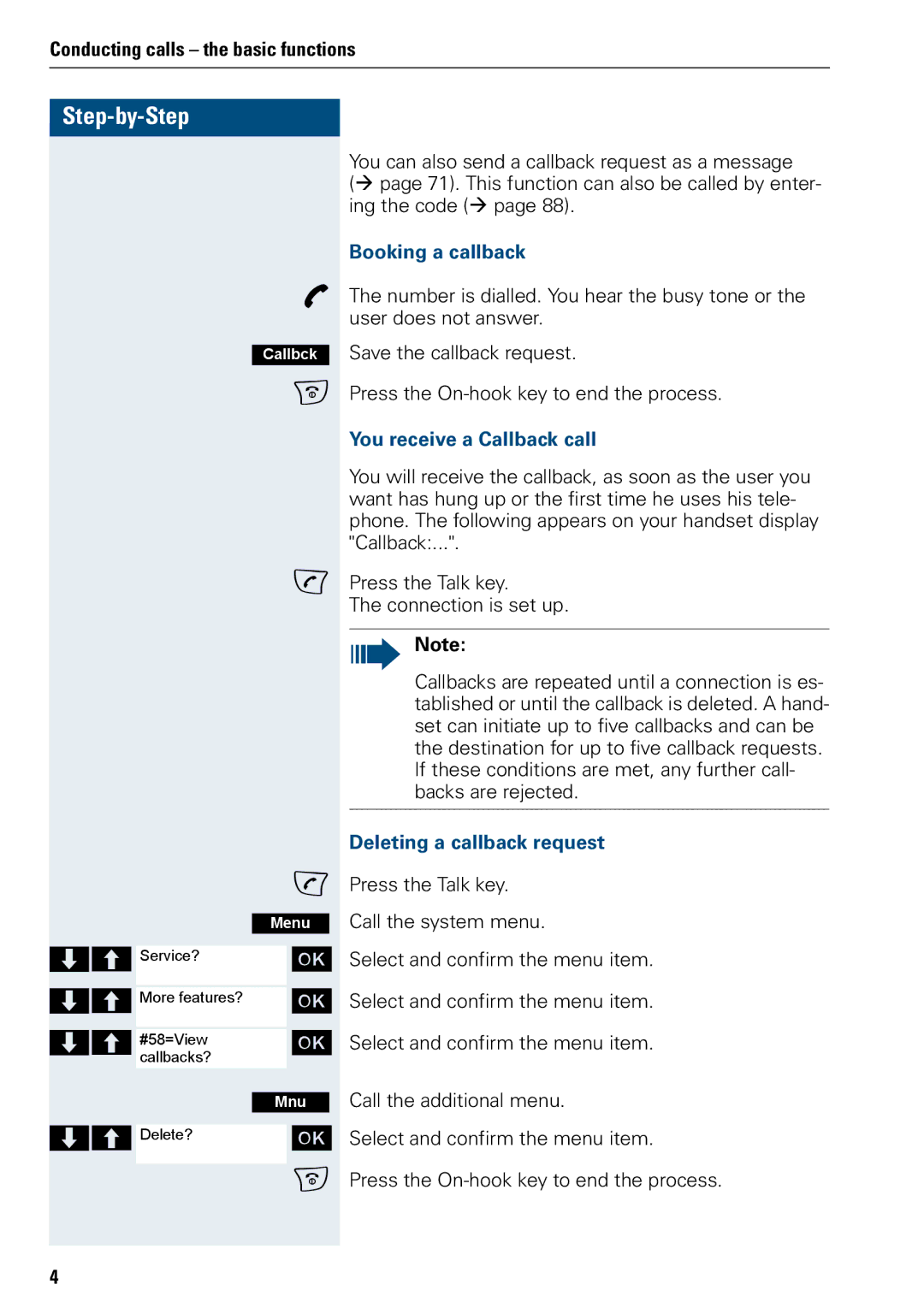
Conducting calls – the basic functions
p
Callbck
a
c
|
|
| c | |
|
|
|
|
|
|
| Menu | ||
>< |
|
| [ | |
Service? |
| |||
>< |
|
| [ | |
|
| |||
More features? |
| |||
>< |
|
| [ | |
|
| |||
callbacks?#58=View |
| |||
|
|
|
| |
|
| Mnu | ||
>< |
|
| [ | |
Delete? |
| |||
|
|
| a | |
|
|
| ||
You can also send a callback request as a message
(Æ page 71). This function can also be called by enter- ing the code (Æ page 88).
Booking a callback
The number is dialled. You hear the busy tone or the user does not answer.
Save the callback request.
Press the
You receive a Callback call
You will receive the callback, as soon as the user you want has hung up or the first time he uses his tele- phone. The following appears on your handset display "Callback:...".
Press the Talk key.
The connection is set up.
Note:
Callbacks are repeated until a connection is es- tablished or until the callback is deleted. A hand- set can initiate up to five callbacks and can be the destination for up to five callback requests. If these conditions are met, any further call- backs are rejected.
Deleting a callback request
Press the Talk key.
Call the system menu.
Select and confirm the menu item.
Select and confirm the menu item.
Select and confirm the menu item.
Call the additional menu.
Select and confirm the menu item.
Press the
4
